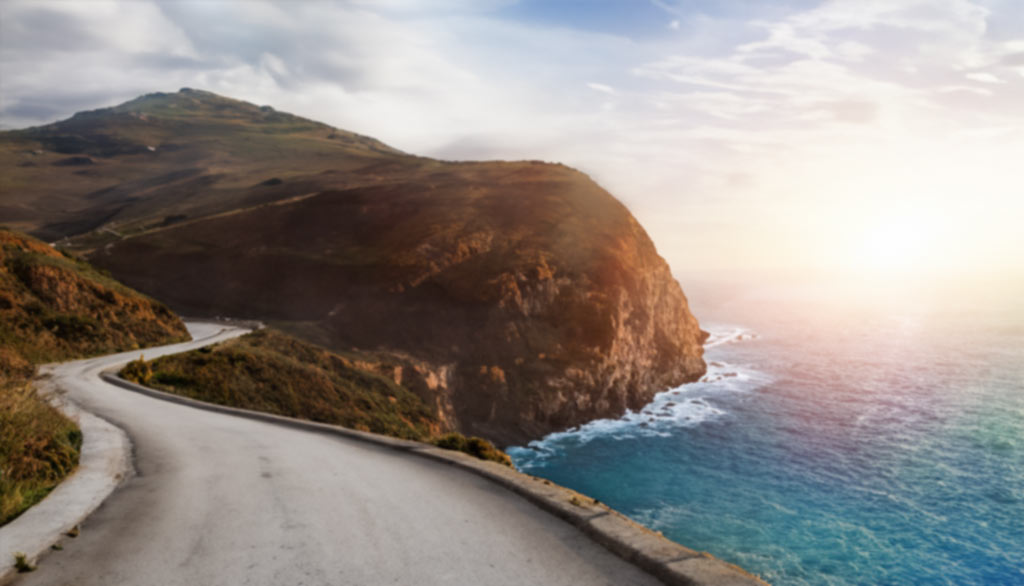
Stalos, located in Crete's northern coast near Chania, merges the appeal of a beachside holiday with Cretan culture. The name "Stalos" originates back to its historical role as a resting point for travelers. Activities in Stalos are diverse, catering to a wide range of interests. The beach is the focal point, offering sun loungers, umbrellas and water sports such as jet-skiing and windsurfing, suitable for all ages. Dining in local tavernas allows visitors to savor Cretan cuisine and experience the island's hospitality. Car rental is convenient for those looking to discover more of Crete. Several agencies in Stalos and nearby Chania Airport offer a range of vehicles, ensuring visitors can find a car that suits their needs. Renting a car allows flexibility in exploring the island's historic sites, villages and beaches at one's own pace. It is an accessible choice for travelers aiming to maximize their experience on the island. Read article
Kokkino Chorio is a village in the Apokoronas region of Chania, on the northwestern part of the Greek island of Crete. Its name translates to "Red Village" due to the unique red soil found in the area. The village is known for its traditional architecture, narrow winding streets and views of Souda Bay and the White Mountains. Visitors to Kokkino Chorio can explore a variety of attractions and activities. The Glass Blowing Workshop is a must-see, where skilled artisans use traditional techniques to create beautiful hand-blown glass objects. The Church of the Assumption is one of the three main churches in the village. Hiking lovers can explore the nearby Drapano Gorge, known for its red rock formations and vegetation. Several options are available for renting a car to explore the area. While there are no car rental companies directly in Kokkino Chorio, visitors can easily rent a vehicle from nearby towns such as Kalyves or Chania. The average cost of renting a car in the area ranges from €30 ($36, £27) to €50 ($60, £45) per day for a small to medium-sized vehicle, with more extensive or luxury cars costing between €60 ($72, £54) and €100 ($120, £90) per day. To rent a car, travelers must present a valid driver's license, passport, government-issued ID and a credit card in the driver's name. It is essential to consider factors such as insurance, age restrictions and fuel policies when reserving a rental car in Kokkino Chorio. Read article
Bali Crete offers a variety of activities for visitors. The region provides water sports and scenic landscape exploration for outdoor enthusiasts. The beaches in Bali Crete are a major attraction. Livadi Beach is known for its accessibility and amenities, while Varkotopos Beach offers a more secluded atmosphere ideal for snorkeling. Each beach provides a unique experience, from lively to calm settings. Travelers can navigate Bali Crete easily with car rental services available, from economy to premium vehicles, ensuring options for every budget and preference. Car rentals offer the freedom to explore the island at one's own pace, discovering hidden gems and local favorites. Read article
Agia Pelagia, a coastal village in Crete, Greece, offers visitors a variety of activities. Tourists can explore historical sites like the Heraklion Archaeological Museum or enjoy outdoor adventures like scuba diving and quad safari tours. The area is also suitable for day trips and excursions to nearby attractions. The beaches of Agia Pelagia are a highlight for many travelers. Through several options like Mononaftis and Psaromoura, visitors can enjoy clear waters and organized facilities for a relaxing day by the sea. Water sports and boat excursions provide additional entertainment options. Car rental services are available for those traveling around Agia Pelagia and Crete. The options range from budget-friendly models to more luxurious choices, ensuring travelers can find a vehicle that suits their needs and allows them to explore the island at their own pace. Read article

Almyrida is a small coastal village in the Apokoronas region of Chania, on the northwestern part of the Greek island of Crete. The name "Almyrida" originates from the Greek word "almyros", meaning salty or brackish, likely due to salt pans near the village. Almyrida has a population of 60,000 as of 2024, which is significant during the peak summer months as tourists flock to enjoy its sandy beaches, crystal-clear waters and laid-back atmosphere. There are numerous things to do in and around Almyrida. The village's main attraction is its well-organized sandy beach, sun loungers and umbrellas for rent and several beachside taverns serving fresh seafood and traditional Greek cuisine. Visitors can also explore the nearby ancient ruins of Aptera, visit Lake Kournas (Crete's only freshwater lake), go stand-up paddleboarding with SUP Almyrida, taste local olive oils on a guided tour or hike the scenic trails of the White Mountains. For those looking to explore further afield, renting a car in Almyrida is convenient. Several car rental companies operate in the village, offering a range of vehicles at competitive prices. To rent a car, drivers must present a valid driver's license, passport or government-issued ID and a credit card in their name. Factors to consider before reserving a car rental include insurance options, the driver's age and gender, the type of car needed and any additional services such as hotel delivery or one-way rental possibilities. Read article
Georgioupolis, a coastal village in Crete, Greece, offers a variety of activities for travelers. Visitors can hike the Imbros Gorge or enjoy underwater adventures at the Paradise Dive Center. The area is also known for its scenic drives and enough opportunities for photography, ensuring a memorable visit for nature and adventure lovers. The beaches of Georgioupolis are a highlight for many. Georgioupolis Beach provides a family-friendly atmosphere with shallow waters and convenient beach bars. Through a more extensive beach experience, the main beach stretches over 10 kilometers (6.21 miles), featuring clean waters and facilities that have earned it a European Blue Flag. The region at their own pace, car rental services like Rental Center Crete offer a range of vehicles to suit different preferences. Visitors can easily discover Crete's hidden gems through competitive rates and the freedom to travel across the island. Read article
Kokkini Hani, a village on Crete's northern coast, east of Heraklion, is accessible and retains an authentic Cretan atmosphere. The resort town of Hersonissos and the traditional village of Koutouloufari offer nightlife and settings. Kokkini Hani serves as an ideal base for exploring Crete's eastern attractions. Getting there is straightforward, with car rental, taxi and bus services from Heraklion Airport. Sitia Airport. The village includes the Kokkini Hani Beach, the historical Minoan Manor Nirou Khani and the Whisky Bar, catering to diverse interests from beach relaxation to archaeological exploration. Its sandy beaches are safe and equipped with amenities, making it suitable for families, while the village's calm and proximity to Heraklion offer a balanced retreat. Despite not being a party hotspot like Hersonissos or Malia, Kokkini Hani offers a mix of bars and pubs for enjoyable evenings. With easy access to the nearest beach, quality accommodations and a selection of dining spots, Kokkini Hani ensures a memorable stay. Car rentals or the convenience of public transport, exploring Kokkini Hani and its surroundings offer into the island's rich history and local life, making it a worthwhile destination for visitors. Read article

Gouves Crete is a coastal town in the north of the island, 18 kilometers (11.18 miles) east of Heraklion. It is a popular destination for tourists who want to enjoy the sun, the sea and the local culture. Gouves Crete has a variety of attractions and activities to suit different tastes and preferences. The main attraction of Gouves Crete is its beaches, which range from sandy to rocky and from crowded to secluded. Some of the best beaches in Gouves Crete are Arina Beach, Marina Port Gouves and Beach Vathianos Kampos. Visitors can relax, swim, sunbathe or try water sports such as windsurfing, jet skiing or snorkeling. Read article
Koutouloufari is a traditional village on the slope of Mt Pyrgias, 29 kilometers (18.02 miles) east of Heraklion and less than 2.8 kilometers (1.74 miles) from the Port of Hersonissos. It has about 600 inhabitants and offers a peaceful and scenic atmosphere for visitors who want to experience authentic Cretan culture and enjoy the nearby attractions and activities. Koutouloufari has many old stone houses with arches, courtyards, vines, small taverns, souvenir shops, bars and coffee shops. Hersonissos is a popular tourist destination with many beaches, water parks, golf courses, museums and archaeological sites. It also has a lively nightlife with bars, clubs and restaurants. Visitors can easily access Hersonissos from Koutouloufari by car, taxi or bus. They can also explore nearby places such as Stalis, Malia, Knossos and Agios Nikolaos. Car rental is a convenient and affordable option for travelers who want to discover the beauty and diversity of Crete. Many car rental companies in Koutouloufari and Hersonissos offer a variety of vehicles, prices and services, such as Rental Center Crete. Car rental can be booked online, by phone or in person. Drivers need to have a valid driver's license and a credit card. Read article
Stalis, positioned on Crete's northern coastline, offers relaxation and entertainment. This coastal town is between Hersonissos and Malia. Originating as a small fishing village, Stalis or Stalida, has evolved into a beloved tourist spot while maintaining its Cretan. Travelers can reach Stalis from Heraklion and Sitia airports, with car rental, taxi and bus services facilitating the journey. Attractions include the Lychnostatis Open Air Museum and the Dikti Mountains. Stalis Beach, the town's highlight, is ideal for leisure and water activities. The Stalis Promenade Ikaros and Daedalus Street add to the town's appeal, featuring dining, shopping and mythological art. Accommodations range from apartments to luxury hotels, ensuring a comfortable stay for all. Dining in Stalis offers a culinary journey through local and international cuisines. Car rental services are readily available, providing a convenient means to explore Crete's wonders. Stalis's proximity to Hersonissos and Malia and easy access from Heraklion enhances its appeal as a tourist base. Stalis ensures a safe and comfortable environment for visitors. Its worth as a vacation spot lies in its beaches, cultural attractions and the balance between leisure and exploration. Optimal visit times are late spring and early fall, avoiding the peak tourist season while enjoying favorable weather. Read article
Sissi Crete is a small fishing village on the island's north coast, 40 kilometers (24.85 miles) east of Heraklion. It offers a peaceful and relaxing atmosphere, away from the crowds and noise of the nearby resorts of Malia and Hersonissos. Sissi Crete is ideal for travelers who want to enjoy Crete's natural beauty and authentic culture. The main attraction of Sissi Crete is its lovely port, where colorful boats are moored, and tavernas serve fresh fish and local dishes. The port is surrounded by a natural harbor, which creates calm and clear water for swimming and snorkeling. There are also several beaches within walking distance from the village, such as Boufos Beach and Avlaki Beach, which have soft sand and shallow water. Sissi Crete is also an excellent base for exploring the island, as it is close to many exciting places and sights. Some options are the ancient Minoan palace of Malia, the impressive Milatos Cave, and the scenic Lassithi Plateau. Travelers can also take boat trips from the port to visit other coastal villages or islands. Car rental and public buses to Heraklion and Agios Nikolaos are available in the town. Read article
Piskopiano Village offers a blend of cultural heritage and leisure activities. Visitors can explore the traditional architecture and local museums, such as the Museum of Rural Life or engage in outdoor adventures like Jeep safaris and hiking. The village provides a serene escape with scenic views and various dining options, from cafes to Cretan tavernas. Beaches near Piskopiano, like Hersonissos Beach, are just 2 kilometers (1.24 miles) away, offering clear waters and sandy shores for relaxation and water sports. Families and solo travelers can find suitable spots for sunbathing or enjoying the Mediterranean climate, which averages 26°C (79°F) in the summer. Travelers can easily navigate Piskopiano and its surroundings thanks to local car rental services. Different options range from economy to luxury vehicles, ensuring a comfortable journey whether exploring nearby attractions or venturing further across Crete. Competitive rates starting from €12 ($13.08, £10.44) per day make it an affordable choice for visitors. Read article

Chania Markets relates to the different marketplaces and bazaars located in Chania, a charming city on the Greek island of Crete. Chania Markets provide a lively and varied shopping experience, presenting a variety of goods, including fresh vegetables, regional crafts, textiles, spices, and authentic Greek fare. Chania Markets serve as shopping destinations and sites of cultural and historical value, representing the region's rich tradition and way of life. Read article

The Heraklion Markets, known as the Central Market, are a thriving and busy centre in the middle of Heraklion, Crete. "Heraklion Markets" refers to the city's several marketplaces and retail locations, each offering a distinct experience. The central market complex is an essential element of the cultural and gastronomic character of the city. Read article

Heraklion is the biggest and most important city on the Greek island of Crete. Heraklion is significant to history and culture because it was one of the most significant places in the Minoan society, which lived thousands of years ago. Heraklion is now a busy, modern city with a mix of historical places, a lively culture and beautiful scenery. Heraklion is on the northern coast of the biggest Greek island, Crete, which is the fifth-largest island in the Mediterranean Sea. The city is in the middle of the northern coast of Crete. Read article
Platanias Beach is a beautiful and crowded seaside destination with considerable tourism development. It was once a quiet seaside village which transformed into a vibrant suburb of Chania. Platanias beach is mainly known for its long, sandy shoreline, clear blue waters and stunning views of the nearby Thodorou islet. The frequent bus services from Chania City and its accessibility make Platanias Beach an attractive and convenient destination for local and international tourists. Platanias Beach has many amenities to enhance visitors' experience, including beach bars, restaurants, umbrellas, sunbeds, showers and various water sports options. The Blue Flag status has been awarded, signifying its cleanliness, high environmental standards and well-managed facilities. Platanias Beach also hosts a lively nightlife scene, with several nightclubs and bars that attract locals and tourists, who dance and enjoy themselves until the early hours. Read article

Sarantaris Beach is a beautiful coastal spot in Hersonissos. Sarantaris Beach offers a stunning backdrop for a relaxing day out, featuring incredible ochre-hued cliffs and exceptionally clear and shallow waters. Unlike the crowded beaches in Hersonissos town centre, Sarantaris Beach is considerably quieter, providing a peaceful atmosphere that appeals to those seeking serenity and relaxation. Sarantaris Beach is protected from strong north-westerly winds by Cape Sarantaris, creating a safe and calm environment ideal for families with small children. The clear and calm waters of the beach are perfect for swimming, offering a refreshing escape on a hot summer day. Sarantaris Beach also provides excellent conditions for snorkelling, with its clear waters allowing visitors to explore the rich marine life that thrives in this area. For those who prefer to stay on land, the cliffs surrounding the beach offer a wonderful opportunity for hiking and exploring the beautiful coastline. Read article
A significant highlight of Heraklion is its rich collection of museums, each telling a unique story of the region's vibrant history. The Heraklion Archaeological Museum is among the city's most popular institutions, offering visitors an in-depth look at Crete's Minoan civilisation through its extensive artefact collection, which spans from the Neolithic period to Roman times. Read article
Chrisoskalitissa Monastery is a Greek Orthodox monastery on the western coast of Crete, Greece. Its name is derived from the Greek words "chriso" (meaning gold) and "skala" (meaning step) from a legend about a humble nun whose steps turned to gold as she climbed the stone stairs leading to the monastery and the name "Chrisoskalitissa" was born. The monastery was constructed during the Byzantine era in the 15th century. It was built atop a towering seaside cliff overlooking the Libyan Sea. Read article
Kalypso Beach, also known as Pirates' Fjord Beach, is located on the southern coast of Crete. Kalypso Beach, pronounced as "kuh-lip-soh", offers a relaxing environment that attracts visitors seeking a peaceful escape. It is blessed with an abundant geography, having rocky shores and waters that gently kiss the shoreline. Kalypso Beach is set against a background of rugged coastal terrain, it provides a perfect spot for recreational activities. The climate in Crete is characterised by warm summers and mild winters, making it an attractive destination year-round. It enjoys a Mediterranean climate, with summer temperatures reaching 30°C (86°F) and mild winters averaging 15°C (59°F). Read article




























